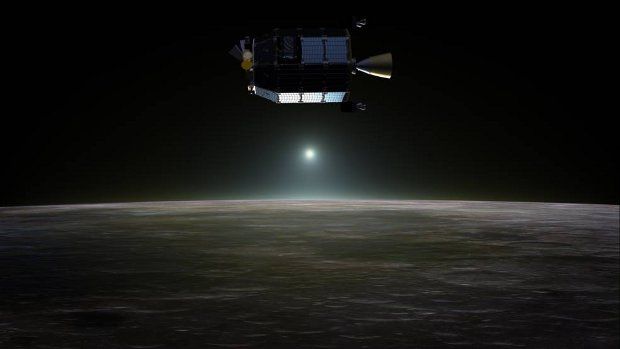The Moon, our planet's companion for billions of years now, packs neon in its atmosphere, reveals data delivered by NASA's LADEE (Lunar Atmosphere and Dust Environment Explorer) probe.
What's more, it appears that this gas, which we Earth dwellers like to put in electric signs, is quite abundant in the lunar atmosphere, as are other gases such as hydrogen, helium and argon.
The Moon's atmosphere is not an atmosphere per se
Like our planet, the Moon is surrounded by an envelope of gases. However, scientists are a tad skeptical about calling this accumulation of gases a proper atmosphere. Instead, they prefer calling it an exosphere.
They say that, when compared to Earth's atmosphere, the envelope of gases encompassing the Moon is about 100 trillion times less dense. This is because, unlike our planet, the Moon's gravity is fairly low.
“A dense atmosphere like Earth's is relatively rare in our Solar System because an object has to be sufficiently massive to have enough gravity to hold onto it,” researchers explain.
Earth's atmosphere is so dense that collisions between the atoms and the molecules that comprise it are inevitable. The Moon's exosphere, on the other hand, is so thin that the gases that form it seldom cross paths.
In fact, this is precisely why scientists are in such a hurry to document its makeup as soon as possible. Thus, they fear that, were spacecraft to start visiting the orb on a regular basis, exhaust gases could easily alter the chemistry of its exosphere.
“Since the Moon's atmosphere is so thin, rocket exhaust and outgassing [i.e. the release of a substance as gas or vapor] from spacecraft could easily change its composition,” they say.
How did the Moon wound up having an atmosphere anyway?
Evidence indicates that, of the compounds that comprise our satellite's exosphere, most originate from solar wind, which researchers describe as a stream of electrically conducting gas blown into space from the surface of the Sun.
This is true about the hydrogen, the helium and now the neon documented hovering over the orb, all of which have been shown to be among the ingredients of solar wind.
The argon detected in the Moon's exosphere, however, appears to be produced by lunar rocks. More precisely, it is said that this gas originates from decaying potassium.
Interestingly, LADEE data indicates that the concentrations of various gases in the Moon's exosphere vary over time. In the case of hydrogen, helium and neon, these variations can be explained by shifts in solar wind.
In the case of argon, on the other hand, scientists suspect the different concentrations detected by the NASA probe were the result of enhanced or toned down outgassing from the surface, in turn produced by tidal stress on the orb.
In case anyone was wondering, NASA's LADEE probe launched in September of 2013. It reached the Moon shortly after, in October, and began collecting data the following month. The spacecraft continued orbiting the Moon until April 2014, when it ran out of fuel and crashed onto the orb's surface.

 14 DAY TRIAL //
14 DAY TRIAL // 

